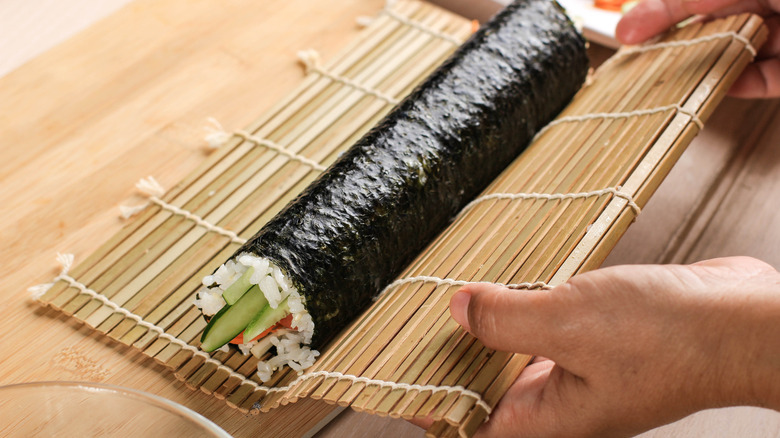Chris Oh Explains What People Get Wrong About Korean Food - Exclusive
A large part of Chris Oh's career revolved around Korean barbecue, arguably the most famous type of Korean cooking outside of South Korea. But Oh, who owns restaurants Um.ma, Chingu, and Kamu, wants to make sure that, all love for Korean barbecue notwithstanding, people understand something about the cuisine of his heritage: "Korean food is isn't all about Korean barbecue," he told Mashed during a recent interview.
"As much as I've banked on my career and my success off Korean barbecue, I would like to think that it's more like a gateway food to other dishes in Korea," he said. "We're really known for our soups, [and] for our drinking foods. There's so much more to it than just barbecued meats over the grill. We have all these little side dishes called banchan that are a very [big] staple in the Korean cuisine and whatnot. It's really good. If you like good food, if you like bold flavors and especially hangover food, Korean food is definitely where it's at."
For Oh, as for many chefs and anyone who really knows Korean cooking well, the true richness of the country's food is more about enjoying all it has to offer and, when possible, doing so in a shared, communal way. That's true whether the gang is gathered around the barbecue or you're sharing some kimbap with a friend while you pause during a day hike.
Knowing that the misconceptions about Korean food don't stop with barbecue, the next topic on the agenda was indeed kimbap itself, a Korean classic that deserves more attention and understanding than it gets.
Chef Chris Oh explains where to take kimbap
You can call it kimbap. You can call it gimbap. Just don't call it sushi, according to chef Chris Oh.
"So I hate to generalize kimbap, but it almost, well it looks like sushi, [but] It definitely isn't sushi," Oh told Mashed. "It's one of those Korean staples. ... If I had to compare it to something American, it's American as almost a hot dog. Kimbap you could take with you on a picnic. You eat them at the baseball games or you can take them on hikes. It's just one of those snacks that you buy at the store, you can make it, you go on a hike, you pop one in your mouth and it's just really one of the staple snack foods in Korea."
But what defines this not-sushi staple of Korean food? In a word, diversity. In a few more words, you can add a whole lot of different ingredients and still be within the bounds of kimbap.
"Obviously there's got to be rice," Oh said, "But you can really, like a more traditional [kimbap] has the vegetables and the cooked meats, but there's different variations you can like try fish. You can do fish cakes. You can do tofu. Kimbap is one of those dishes where you can be pretty creative and pretty versatile with the dish."
For exciting recipes and global cuisine inspiration, check out www.SPAM.com/recipes.

